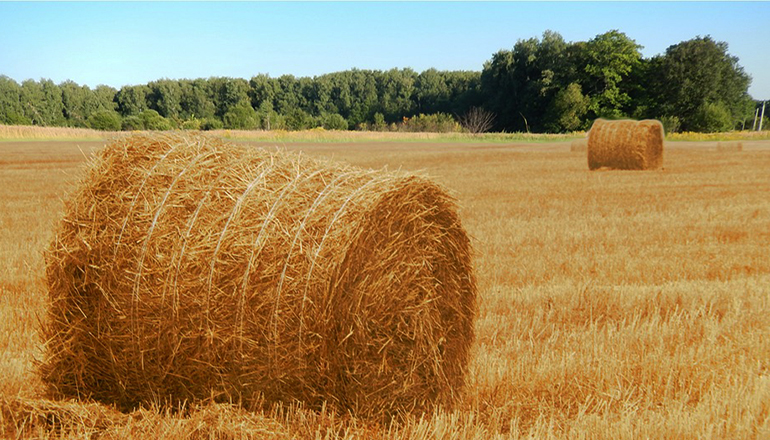Livestock producers can stretch short supplies of hay this year by using a simple ammonia treatment on bales, says University of Missouri Extension livestock specialist Zac Erwin.
Erwin and MU Extension agronomy specialist Valerie Tate will lead-free hay ammoniation demonstrations Oct. 9 and Oct. 11 at 5:30 p.m. to show farmers how to boost the nutritive value of poor-quality hay and makes it more digestible for cows and horses.
MU Extension state forage specialist Craig Roberts calls ammoniation a “secret weapon” in drought-stressed areas. With proper ammoniation, the nutritional value of hay, cornstalks, and straw can improve significantly, even double, at a reasonable cost.
The Oct. 9 demonstration is at the Randy Miller farm, 2794 County Road 2445, Higbee. The Oct. 11 demonstration is at the Randy Baker farm, 15026 State Highway H, La Plata, on the south side of grain bins in Sue City.
Erwin says it is important to ammoniate only poor-quality hay. Higher-quality grass hay can become toxic with nitrates after ammonia treatment and cause “crazy cow” syndrome when fed. Use a maximum of 50 pounds of anhydrous ammonia per ton of straw to avoid nitrate issues.
Producers should not worry if their tall fescue is endophyte-infected before ammonia treatment, Roberts says. MU research shows that ammoniated tall fescue is about five times less toxic than pasture, as the toxins break down during ammoniation.
The process takes one week to a month, depending on temperature, says Erwin. If the temperature is 85 degrees or higher, one week is recommended. Treat two to three weeks in milder temperatures and up to four weeks when temperatures fall. Erwin says three weeks is a good average.
Follow these steps:
- – Stack round bales in a pyramid so the covering will shed rainfall. Stack height is limited by the width of the covering.
- Cover with 6 mil black plastic, the kind used to cover silage pits.
- Plastic sheeting should completely cover the stack with sufficient length to cover edges with soil or lime. Tamp the soil down to create an airtight seal.
- Fill the tank with only enough ammonia for the stack being treated. This will avoid the risk of over treating.
- – Add ammonia slowly by cracking the tank valve. Let ammonia trickle into the middle of the hay bales overnight. Wear proper safety equipment when working around ammonia.
- Air out bales three days before feeding to allow the ammonia to clear. Do not uncover in windy weather. Air out before testing forage to check improvement.
The cost to ammoniate is $20-$30 per ton, depending on the cost of plastic sheeting and ammonia in your area, Erwin says.
For more information, contact Erwin at 660-665-9866 or [email protected], or Tate at 660-895-5123 or [email protected]. You may also contact the agronomist at your county MU Extension center.
The MU Grasslands Project and the Natural Resources Conservation Service sponsor the free events.







